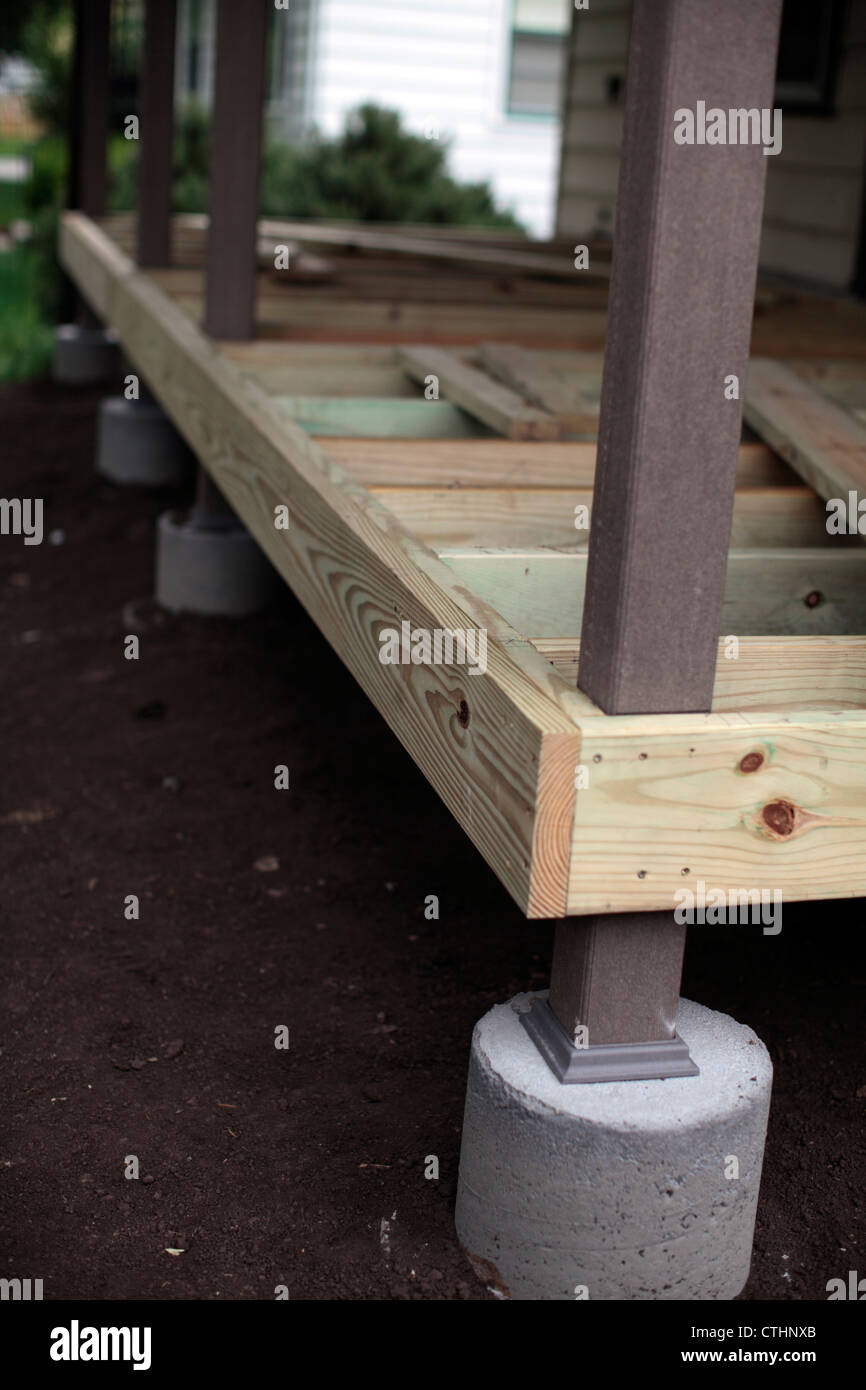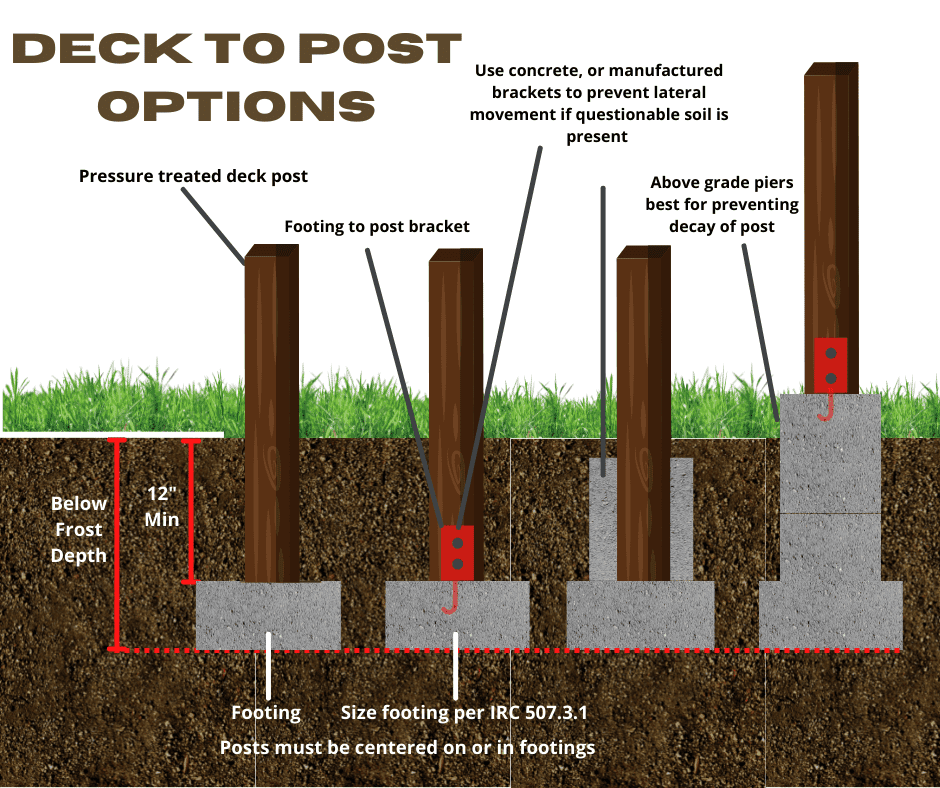Professional Tips for Setting Up Deck Footings to Support Your Outdoor Space
When it comes to developing a deck, one of the most important aspects to think about is the setup of appropriate footings. These footings are the structure upon which your exterior room will relax, giving security and assistance for years to come. What exactly does it take to mount deck grounds correctly?
Relevance of Appropriate Deck Grounds
Correct deck grounds are necessary for making sure the security and durability of your outside space. When creating a deck, it is vital to take note of the structure on which it will relax. Deck footings supply the required support for the whole structure and help distribute the weight uniformly - Deck Footings. Without strong and effectively set up footings, your deck may come to be unsteady, leading to security dangers and costly fixings.

Along with security, appropriate deck footings additionally add to the durability of your outdoor space (Deck Footings). Grounds that are developed and built to hold up against the components and soil problems in your location will help protect against the deck from settling or changing in time. By guaranteeing the grounds are correctly sized and set up, you can reduce the threat of damage to the deck structure, expanding its life expectancy and decreasing the demand for pricey repair work or replacements
Selecting the Right Kind Of Footings
When selecting the appropriate sort of footings for your deck, it is essential to take into consideration variables such as dirt problems, regional building ordinance, and the overall design of your exterior room. The type of footing you choose will play an important function in making sure the security and durability of your deck.
One usual kind of footing is the concrete footing. Concrete grounds appropriate for many soil conditions and give superb support for decks. They are normally mounted below the frost line to prevent shifting and clearing up as a result of cold and thawing cycles. An additional alternative is helical piers, which are excellent for areas with unsteady soil or high water tables. These piers are screwed into the ground and supply strong assistance for the deck.
Sometimes, you may need to utilize specific footings, such as pile footings or deep foundations, if you are building a multi-level or big deck. These footings are developed to distribute the weight of the deck over a bigger location, making sure security and stopping resolving or sinking.
Prior to selecting a kind of footing, it is necessary to seek advice from regional building regulations and regulations to ensure conformity. Furthermore, think about the design and planned use your outdoor space. Aspects such as the size, form, and load-bearing needs of your deck will influence the sort of footing that is most appropriate.
Preparing the Ground for Footing Installment
To effectively prepare the ground for footing setup, it is essential to analyze the dirt problems and take needed steps to guarantee security and sturdiness of the deck. The primary step is to dig deep into the area where the grounds will be set up. The deepness of the excavation will depend on the frost line in your area and the certain requirements of the deck layout. It is important to get rid of any type of greenery, rocks, or particles from the excavation to guarantee a strong foundation.
As soon as the area has been excavated, the next action is to portable the soil. This can be done utilizing a plate compactor or by using a hand tamper. Condensing the dirt assists to remove any spaces or air pockets, which can bring about working out and instability in time.
After compacting the dirt, it is very important to lay a layer of gravel or crushed rock at the end of the excavation. This will certainly give drainage and help to stop water from pooling around the footings, which can result in erosion and instability.
Step-by-Step Guide to Putting Up Deck Footings
After effectively preparing the ground for footing installment, the following step is to start the procedure of mounting deck footings. This step-by-step guide will certainly offer you with a clear understanding of exactly how to set up deck grounds for your outside area.
Determine the location: Start by marking the positions of the deck footings making use of stakes and string. Ensure that the locations align with the design and format of your deck.
Dig the openings: Make use of a blog post opening miner or an auger to dig the openings for the footings. The deepness and diameter of the holes ought to remain in conformity with local building ordinance and the specific requirements of your deck layout.
Degree the holes: Utilize a level to guarantee that the openings are dug to the proper deepness and are degree with each other. (Deck Footings)
Add crushed rock: Location a layer of gravel at the end of each opening to boost drainage and prevent the timber from deteriorating.
Put the footings: Place the grounds right into the holes, seeing to it they are degree and plumb. Utilize a level and a measuring tape to make certain precision.
Secure the footings: Put concrete right into the holes around the footings, loading them to the top. Utilize a message level to guarantee the grounds stay level as the concrete collections.
Enable time for curing: Let the concrete treatment according to the producer's instructions prior to waging the deck building.
Common Errors to Avoid Throughout Footing Installation
One important facet to think about during the setup of deck footings is staying clear of typical blunders that can jeopardize the security and longevity of your exterior area. While deck footings might feel like a uncomplicated and easy component next of the construction procedure, overlooking specific elements can bring about costly repair services and potential security hazards down the line.

In addition, neglecting to mount appropriate water drainage steps can create water to build up around the footings, resulting in rot, decay, and the eventual weakening of the deck's foundation. Making use of the incorrect type of footing material or falling short to sufficiently secure the grounds can compromise their structural honesty.
To avoid these mistakes, it is vital to talk to an expert or adhere to industry guidelines to guarantee appropriate ground installation. By doing so, you can guarantee the stability and long life of your outdoor area, supplying a secure and enjoyable environment for years to come.
Final Thought
In final thought, more info here setting up correct deck grounds is crucial for the stability and longevity of your outdoor space. By selecting the best sort of footings and effectively preparing the ground, you can make sure a strong structure for your deck. Adhering to a detailed overview and staying clear of typical errors throughout footing setup will find here even more enhance the resilience and security of your deck.
Appropriate deck footings are important for making sure the stability and longevity of your outdoor room. The grounds serve as a connection between the deck and the ground, allowing the weight of the deck and its occupants to be spread equally right into the soil.One common kind of ground is the concrete footing. Insert the grounds: Place the footings right into the holes, making sure they are level and plumb. Protect the grounds: Pour concrete right into the openings around the footings, filling them to the top.